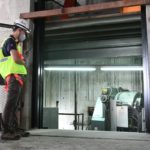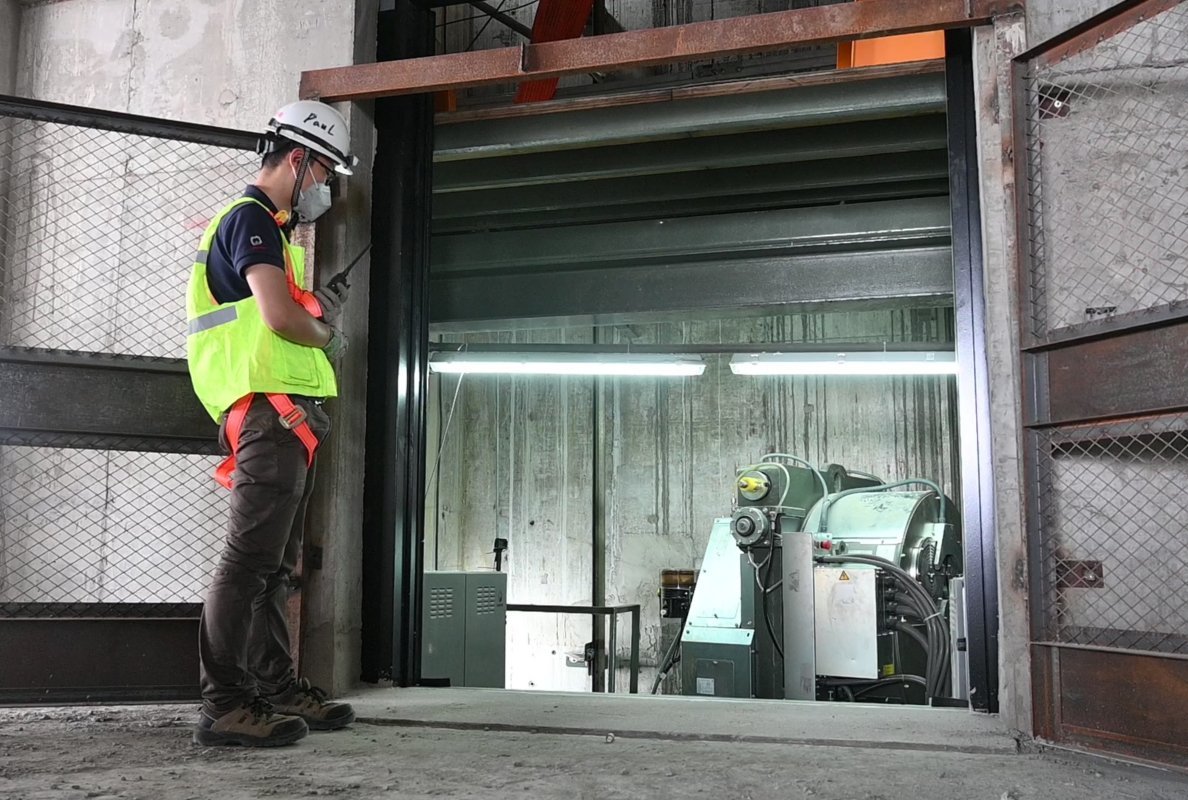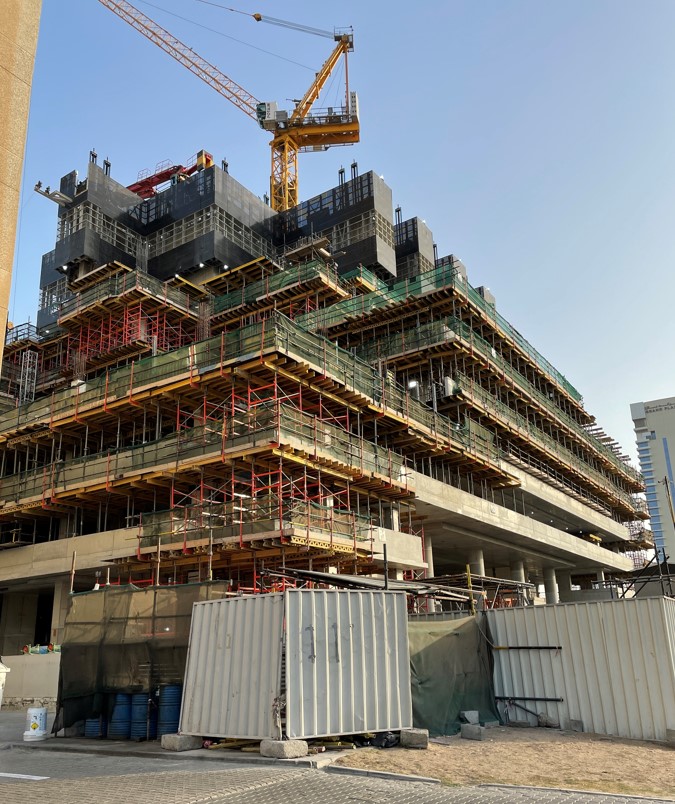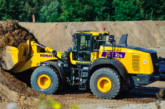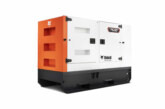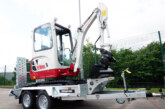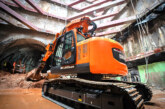On the back of several recent efficiency-boosting design enhancements and upgrades to its CLIMB Lift – self-climbing vertical transportation system – Schindler has announced two notable sales in Europe and the Middle East as the product’s popularity continues to grow worldwide.
The 64-story Elbtower in Hamburg, Germany will showcase the first real-life application of the system’s latest design option – which enables integration of the lifting platform and crash deck with the building’s formwork. The Schindler CLIMB Lift will be installed in mid-2023, with its innovative design allowing it to climb more seamlessly with the Elbtower’s structure as it heads toward its top out at 245 m.
Transporting materials and personnel at up to 3 m/s, the Schindler CLIMB Lift brings improved efficiency to the construction of Elbtower, a theme that extends throughout the building. Designed by David Chipperfield Associates for SIGNA Real Estate, the development will be practically carbon neutral thanks to its smart energy concept with much of the required heating retrieved from waste sources. In addition to utilizing the Schindler CLIMB Lift, the building will host 14 Schindler 7000 and 24 Schindler 5500 elevators when it opens in 2025.
Middle Eastern promise
Marking the first time the Schindler CLIMB Lift has been used in the Middle East, a 60-story 230 m signature tower in Dubai, “The S”, is preparing to begin the installation of a unit in November 2022. A mix of office and residential space, with 85 luxury apartments, the US$400 m project is located at the forefront of Sheikh Zayed Road and is being developed by Sobha Realty and its in-house design firm, PNC Architects. It will eventually incorporate 11 Schindler 7000 SD and three Schindler 5500 elevators when it is completed in late 2024.
Raising the roof
With the compatibility of the Schindler CLIMB Lift recently extended from the Schindler 7000 elevator to include its Schindler 5500 model, its ability to speed up overall construction work while enhancing worker safety can now be leveraged on smaller buildings of 150 m and below.
Installed inside a high-rise construction’s standard elevator shaft, it reduces exposure to external weather conditions that would otherwise restrict or complicate construction operations that use an external hoist system. This internal system also allows the building’s façade to be closed earlier, encouraging faster income generation through the potential to lease space sooner.
With the addition of savings stemming from reduced manpower from shorter build times, Schindler believes that the system can reduce total building costs on a high-rise construction by as much as 5%. By enabling travel speeds approximately five times faster than a typical external hoist, with well over twice the average hourly payload (at 48,000 kg/h) or passenger count (600 per hour), Schindler CLIMB Lifts offer considerable productivity benefits to speed up the construction process.
Worldwide footprint
“The Schindler CLIMB Lift has now been installed more than 170 times since it was introduced over 20 years ago, and customer enthusiasm for it is still growing – and spreading to new territories,” said Stefan Weber, Head Large Projects Operations at Schindler. “Whether it’s an advantage as simple as avoiding the need for workers to queue outside in harsh weather conditions at the start of their shift, or as profitable as incorporating permanent elevator components from the very beginning to speed up the final installation, the Schindler CLIMB Lift offers a host of benefits that can help streamline any high-rise project.”

